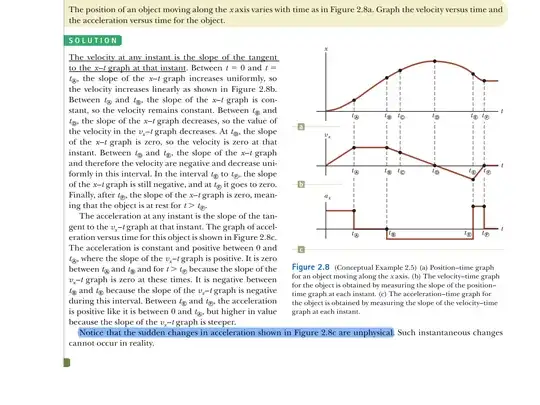These are very simple looking graphs. What I don’t understand is (I’m talking of the highlighted text in blue at the bottom), it says such instantaneous changes in acceleration can not occur in reality. If acceleration is positive for a certain time interval, can’t it be zero instantaneously if we stop pushing the body, i.e if we stop applying force on it ‘suddenly’? Similarly, if a body is moving with a constant velocity (acceleration is zero), and if we apply brakes suddenly, doesn’t its acceleration become negative instantaneously? I can’t seem to understand why the third graph is not possible, as the book says.
And, if the third graph is not possible, it means the two graphs above it are not possible either, are they? Because all three graphs here describe the same physical situation. Please help me understand this. Thanks
